What's New
Displaying results 2921 - 2930 of 4052
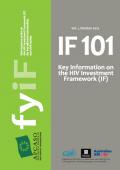
Resource | Publications,
The HIV Investment Framework (IF) is a model for HIV and AIDS investment and prioritisation for maximum impact. The IF advocates for a short-term increase in HIV funding in order to reduce funding requirements over the long term.
IF is aligned to the investment thinking approach to resourcing of the HIV response. This means treating resources for the HIV response as investments that will deliver returns, rather than as expenses that will always have gaps demanding to be filled.
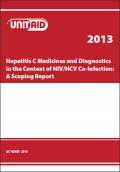
Resource | Publications,
The UNITAID 2013-2016 Strategy includes the treatment of HIV/AIDS and co-infections as one of six strategic objectives. This scoping report focuses on issues, challenges and opportunities related to one of the most important HIV co-infections—Hepatitis C virus (HCV)—and represents UNITAID’s first effort to gather market intelligence on products for the diagnosis and treatment of HCV in individuals co-infected with HIV and HCV.
Though preliminary in nature, this scoping report gives an overview of the prevalence and impact of HCV and HIV co-infection, existing medicines and diagnostics as well as those in the pipeline, commodity access issues, and market shortcomings.
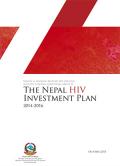
Resource | Publications,
This national investment plan is a renewed call for coordinated action from the public and private sectors, civil society and international partners to reduce Nepal’s HIV burden. Drawing on programmatic data and a 2013 review of Nepal’s national response, a 4-month participatory process was undertaken to develop this plan.
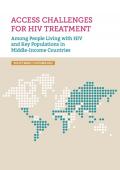
Resource | Publications,
Middle-income countries (MICs) are facing a crisis of containing costs for treating people living with HIV. These countries carry a high burden of HIV, and transmission of the virus is often concentrated amongst key populations: people who inject drug (PWID), men who have sex with men (MSM), sex workers (SW), transgender (TG), prisoners and migrants.
This policy brief examines the challenges to affordable HIV treatment access in MICs amongst people living with HIV (PLHIV) and key populations.
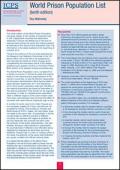
Resource | Fact Sheets,
This tenth edition of the World Prison Population List gives details of the number of prisoners held in 222 independent countries and dependent territories. It shows the differences in the level of imprisonment across the world and makes possible an estimate of the world prison population total.
The World Prison Population List is compiled from a variety of sources. In almost all cases the original source is the national prison administration of the country concerned, or else the Ministry responsible for the prison administration. Most figures relate to dates between September 2011 and September 2013. Since prison population rates (per 100,000 of the national population) are based on estimates of the national population they should not be regarded as precise. In order to compare prison population rates in different regions of the world median rates have been used because they minimise the effect of countries with rates that are untypically high or low.
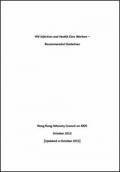
Resource | Guidelines,
The Hong Kong Advisory Council on AIDS formulated the “HIV Infection and the Health Care Workers – Recommended Guidelines” in 1994, which was subsequently updated and reprinted in 2003. As scientific knowledge expanded and new developments took place both internationally and locally over the last decade, the Council has reviewed and revised the Guidelines accordingly. In the process, the views and feedback of a variety of stakeholders including those in the HIV and health care fields were actively sought. The public was also consulted before the Guidelines (October 2013) were finalised. The invaluable input of these organizations and individuals is gratefully acknowledged. In October 2015, this Guidelines saw further update on the current operation of the Expert Panel on HIV Infection of Health Care Workers, and time-limited information was removed.
The Guidelines aims to provide relevant and concise information and guidance for addressing the complex and sensitive subject of HIV infection and health care workers.
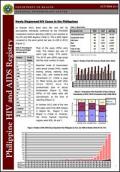
Resource | Fact Sheets,
In October 2013, there were 491 new HIV Ab sero-positive individuals confirmed by the STD/AIDS Cooperative Central Laboratory (SACCL) and reported to the HIV and AIDS Registry (Table 1). This is 66% higher compared to the same period last year (n=295 in 2012).
Most of the cases (94%) were male. The median age was 27 years (age range: 4-76 years). The 20-29 year (60%) age group had the most number of cases.
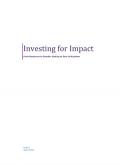
Resource | Publications,
Myanmar recognizes the HIV epidemic as one of its most serious health challenges: AIDS is one of the priority diseases in the National Health Plan. The country is committed to achieving a series of national and global strategic targets. The second National Strategic Plan on AIDS 2011–2015 (NSP II), which guides Myanmar’s AIDS response, identifies three strategic priorities – HIV prevention, a comprehensive continuum of care for people living with HIV (PLHIV), and mitigating the impact of the disease on PLHIV and their families.
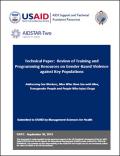
Resource | Publications,
This Technical Paper is part of the Review of Resources: Gender-Based Violence against Key Populations – an activity commissioned by the Gender Technical Working Group (TWG) of the President's Emergency Plan for AIDS Relief (PEPFAR).
The activity was implemented by AIDSTAR-Two, through the International HIV/AIDS Alliance and Project Partners (global key population networks/expert consultants1), in collaboration with Management Sciences for Health. The activity’s aim was to contribute to the ability of PEPFAR and its partners to better understand and respond to gender-based violence (GBV) against four key populations - sex workers, men who have sex with men (MSM), transgender people and people who inject drugs (PWID) - and, in turn, to reduce HIV risk among such communities, their sexual partners, friends and family.
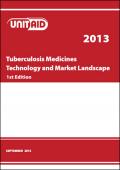
Resource | Publications,
Tuberculosis (TB) is a curable disease, but among the 8.7 million new cases in 2011, there were 1.4 million deaths. Currently available medicines can cure most cases of TB in six months, and advances in technology—including novel and repurposed medicines and regimens—hold promise as new or improved tools to treat drug resistant forms of the disease. However, many patients do not have access to appropriate TB medicines. Lack of access can be traced, in large part, to markets that do not function well.
This report is part of a broad and ongoing effort by UNITAID to understand the landscape for TB medicines so as to complement other tools and initiatives. As data on TB medicines markets are incomplete, UNITAID intends this report to serve primarily as a platform for stimulating discussion. That is, this report should be considered a preliminary analysis to: 1) engage key stakeholders in discussion of critical market shortcomings related to TB medicines; and 2) to identify potential market-based approaches to remedy these and establish or restore functional market dynamics.





